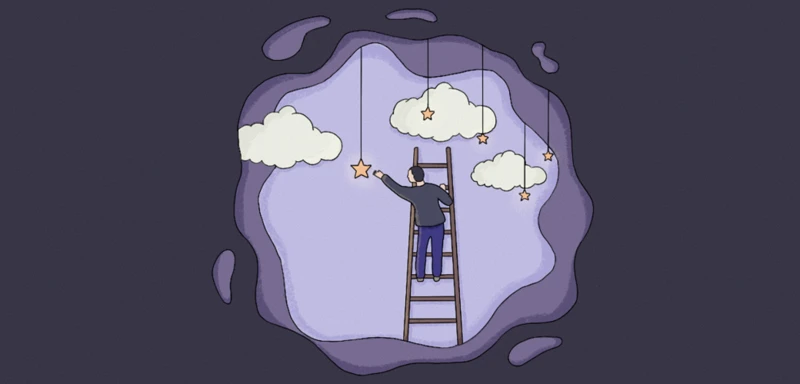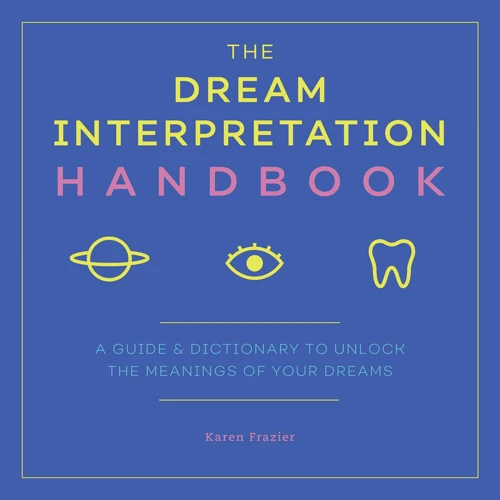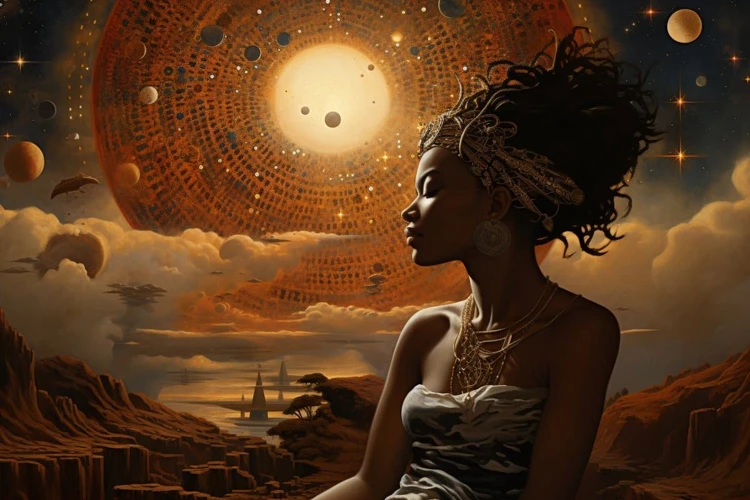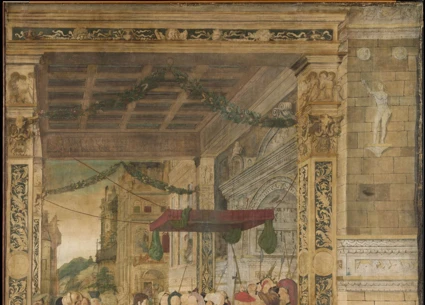Dreams have long fascinated humans, serving as a mysterious gateway to our subconscious minds. Across cultures, dreams have played a significant role in shaping beliefs, art, and even decision-making. The study of dream symbolism and meaning can provide valuable insights into the human psyche, offering a glimpse into our deepest desires, fears, and emotions. However, understanding dreams is not a universal experience, as individual and cultural differences greatly influence the interpretation of symbols and their significance. This article explores the impact of culture on dream symbolism and meaning, delving into the cultural factors that shape our dreams and how they can be interpreted across different cultures. By examining specific cultural symbols, case studies, and the connection between personal experiences and cultural background, we can gain a deeper appreciation for the diverse and complex nature of dreams.
Understanding Dreams

Dreams are a universal phenomenon that has captivated humans for centuries. Understanding the complexities of dreams can provide valuable insights into our subconscious minds and the inner workings of the human psyche. While there are commonalities in dream experiences across cultures, individual and cultural differences greatly influence the interpretation of symbols and their meanings. Some theories suggest that dreams serve as a way for the brain to process and consolidate emotions and experiences from the day, while others explore the possibility of dreams being a form of communication from the unconscious mind. Exploring these theories and the common interpretations of symbols can help unravel the mysteries of our dreams. For those interested in understanding nightmares, there are coping strategies available as well. By delving into the science and psychology behind dreams, we can gain a deeper appreciation for these enigmatic experiences that have fascinated and perplexed us throughout history.
Dreams as Universal Phenomena
Dreams as Universal Phenomena
Dreams are a universal phenomenon experienced by people across different cultures and societies. Although cultural and individual differences influence dream symbolism and interpretation, the act of dreaming itself is a shared human experience. While the specific content and themes of dreams may vary, the overall occurrence of dreaming is a common human trait.
Dreams are believed to occur during the rapid eye movement (REM) stage of sleep, characterized by heightened brain activity and vivid imagery. During this stage, the brain engages in various cognitive processes, including memory consolidation, emotional regulation, and problem-solving. The universality of dreams is supported by scientific studies and observations across cultures, highlighting that all humans, regardless of their cultural background, have the capacity to dream.
Throughout history, dreams have been attributed with significance and meaning. Ancient civilizations often interpreted dreams as messages from deities or ancestors, guiding individuals in their daily lives. In contemporary society as well, dreams continue to hold cultural and personal significance. They can serve as a source of inspiration, guidance, or even emotional release.
While dreams are universal, the specific interpretations and significance of dream symbols may vary greatly. Cultural influences play a significant role in shaping the symbolism attached to certain objects, animals, or events in dreams. These cultural symbols and interpretations are passed down through generations, contributing to the rich tapestry of dream symbolism across different societies.
Dreams are a universal phenomenon experienced by people worldwide. They occur during the REM stage of sleep and serve various cognitive functions. While the act of dreaming is universal, the interpretation and symbolic meaning of dreams are heavily influenced by cultural factors. Exploring the universality of dreams can help us understand the interconnectedness of human experiences and the diverse ways in which cultures perceive and interpret the world of dreams.
Individual and Cultural Differences
Dreams are not only influenced by our individual experiences and emotions but also by the culture in which we are immersed. Individual and cultural differences play a significant role in shaping the content and interpretation of dreams. While some dream symbols may hold universal meanings, others may vary widely across cultures. Our personal experiences, beliefs, values, and cultural norms all contribute to the formation and interpretation of dream symbolism.
Individual differences can influence the themes and symbols that appear in our dreams. Our unique life experiences, traumas, fears, and aspirations shape the content of our dreams. For example, someone who has recently experienced a loss might have dreams that reflect their grief or longing. Similarly, individuals with recurring nightmares may have unresolved anxieties or fears that manifest in their dreams. Understanding the individual’s background and personal experiences is crucial in interpreting the meaning behind their dreams.
Cultural differences also greatly impact dream symbolism and interpretation. Each culture has its own set of beliefs, myths, and symbols that inform the cultural narrative. These symbols can manifest in dreams, often influenced by religious, spiritual, and historical contexts. For instance, in Western cultures, dreams of flying are commonly associated with a sense of freedom and liberation, while in some Indigenous cultures, they may be interpreted as a form of spiritual journey or connection to ancestors. Similarly, certain animals or colors may hold specific cultural meanings that vary across different societies.
It is essential to recognize that dream interpretation should consider both individual and cultural differences. Understanding the unique perspectives and experiences of individuals within their cultural context allows for a more accurate and comprehensive analysis of dream symbolism. By acknowledging and respecting these differences, we can avoid cultural biases and develop a more insightful interpretation of dreams. As we delve deeper into the impact of culture on dream symbolism, we can gain a richer understanding of the intricate relationship between dreams, individuals, and the societies in which they exist.
The Role of Culture in Dream Symbolism

Culture plays a significant role in shaping dream symbolism and its interpretation. Within each culture, there are specific symbols and archetypes that hold cultural significance and meaning. These symbols are often influenced by religious beliefs, mythology, folklore, language, and other cultural factors. For example, in Western cultures, the symbol of a white dove is commonly associated with peace and purity, while in Eastern cultures, the lotus flower is often seen as a symbol of enlightenment and spiritual growth. Interpreting cultural-specific symbols requires an understanding of the cultural context in which they are embedded. By exploring the cultural symbolism of dreams, we can gain a deeper understanding of the collective beliefs and values that shape our dreamscape.
Cultural Symbols and Archetypes
Cultural symbols and archetypes play a significant role in shaping the symbolism and meaning of dreams. These symbols are deeply rooted in the collective consciousness of a particular culture or society, and their influence can be seen in various aspects of daily life, including dreams. Archetypes, which are universal symbols or patterns of thought, can be found in dreams across cultures and are often associated with fundamental human experiences and emotions. For example, the archetype of the “wise old man” or “wise old woman” can be seen in dreams as a representation of wisdom, guidance, and inner knowledge. Similarly, cultural symbols specific to a particular society may manifest in dreams to convey deeper meanings. A cultural symbol could be an object, a person, an animal, or even a specific location that holds significant cultural significance and symbolism. These symbols can vary greatly from one culture to another. For instance, in Western culture, a dream about a white wedding dress may symbolize purity and innocence, while in Eastern cultures, it may represent mourning or death. Understanding cultural symbols and archetypes is essential in interpreting dreams accurately, as they provide valuable contextual clues that shape the dreamer’s understanding and the dream’s significance. By exploring cultural-specific symbols and universal archetypes, we gain a deeper understanding of how culture influences dream symbolism and meaning. Additionally, deciphering these symbols can provide insights into the collective beliefs, values, and experiences of a particular culture, enriching our understanding of the diverse human experience. For more in-depth information on common symbol interpretations, you can refer to this resource.
Interpreting Cultural-Specific Symbols
When it comes to interpreting cultural-specific symbols in dreams, it is essential to consider the cultural context in which the dreamer resides. Different cultures have unique symbols and meanings attached to them, making it crucial to understand the cultural background to accurately interpret dream symbolism. For example, while a snake may generally be seen as a symbol of danger or deceit in Western cultures, it can represent fertility or rebirth in certain Eastern cultures.
In order to interpret cultural-specific symbols, it is important to conduct thorough research and gain insights into the cultural beliefs, customs, and traditions associated with the symbol in question. This can be achieved by studying cultural mythology, folklore, and even consulting experts or individuals from the specific culture. Additionally, it is crucial to approach dream interpretation with respect and sensitivity, avoiding cultural stereotypes or biases.
Recognizing the influence of personal experiences and exposure to different cultures is also essential in deciphering cultural-specific symbols. It is not uncommon for individuals to incorporate symbols or imagery from various cultures into their dreams, reflecting their multicultural background or experiences. Understanding the dreamer’s individual cultural context can provide valuable clues in interpreting dream symbolism within the cultural-specific framework.
Interpreting cultural-specific symbols requires a deep understanding of the cultural context, research into cultural beliefs and traditions, and an open-minded approach to avoid misconceptions or misinterpretations. By delving into the rich tapestry of cultural symbolism, we can gain profound insights into the dreamer’s experiences and the influences of their cultural background on their subconscious mind.
Cultural Factors Shaping Dream Meanings

Cultural factors play a significant role in shaping the meanings and symbolism attributed to dreams. Language and verbal expression, religious and spiritual beliefs, as well as mythology and folklore, all contribute to the cultural lens through which dreams are interpreted. Language shapes the way we think and perceive the world, and different cultures may have unique linguistic structures and expressions that influence dream interpretation. Religious and spiritual beliefs also heavily influence dream symbolism, with different cultures attributing specific meanings to symbols based on their religious teachings. Additionally, mythology and folklore provide a rich tapestry of symbols and archetypes that often find their way into dreams. Exploring these cultural factors and how they shape dream meanings adds depth to the understanding of dreams and highlights the intricate relationship between culture and the human subconscious mind. For a deeper understanding of dreams and nightmares, strategies for coping and interpretation are available as well.
Language and Verbal Expression
Language and verbal expression play a significant role in shaping dream symbolism and meaning. The cultural context and linguistic nuances of a person can heavily influence the way they perceive and interpret their dreams. For example, in cultures with multiple languages, dreams may incorporate words or phrases from different languages, reflecting the individual’s multicultural background. Additionally, the richness of vocabulary and idiomatic expressions in a language can influence the symbolism in dreams. For instance, a person who speaks a language with a strong agricultural influence may have dream symbols related to farming, crops, or livestock. The way individuals verbalize their dreams can affect the interpretation. Some cultures may have a more direct and explicit way of describing their dreams, while others may rely on metaphors and symbolic language. This linguistic variation adds depth and complexity to the interpretation process. To understand the influence of language on dream symbolism further, researchers and psychologists have studied the linguistic patterns and cultural associations within dreams. By exploring the relationship between language, cultural background, and dream symbolism, we can gain a deeper understanding of how language shapes our dreams and their interpretation. (Source: The Science Behind Dreams: Exploring Theories)
Religious and Spiritual Beliefs
Religious and spiritual beliefs play a significant role in shaping the symbolism and meaning of dreams. In many cultures, dreams are seen as a form of divine communication or prophetic messages. For example, in ancient Egyptian culture, dreams were believed to be a means of receiving guidance from the gods. The interpretation of dreams was highly valued, with dream books and interpreters often consulted to decipher their hidden messages. Similarly, in Native American cultures, dreams hold great spiritual significance. They are seen as a way for individuals to connect with their ancestors, spirits, and the divine. The symbols and imagery experienced in dreams are believed to carry profound spiritual insights and guidance for one’s life journey. Religious and spiritual beliefs can also influence the interpretation of specific symbols in dreams. For instance, a cross may hold different meanings for someone of Christian faith compared to someone who follows a different religious tradition. In some cultures, specific religious figures or deities may appear in dreams, offering guidance or warnings. Understanding an individual’s religious or spiritual background is crucial in interpreting their dreams accurately and respectfully. It allows for a deeper understanding of the symbols and messages that may be embedded within the dream narrative. By recognizing the influence of religious and spiritual beliefs, dream analysis can uncover profound insights into one’s personal and spiritual journey. For those interested in understanding nightmares and how they relate to religious or spiritual beliefs, coping strategies are available to provide support and assistance.
Mythology and Folklore
Mythology and folklore play a significant role in shaping dream symbolism and meaning. These rich cultural narratives and stories have the power to influence our dreams by providing archetypal symbols and themes that resonate deeply within us. Different cultures have their own mythological and folkloric traditions, each with its unique symbolism and interpretations. In Greek mythology, for example, dreams were often seen as messages from the gods, offering guidance or warnings. The story of Morpheus, the Greek god of dreams, highlights the belief that dreams were a means of communication between the mortal world and the divine. Similarly, in Native American folklore, dreams held spiritual significance and were considered a channel for receiving messages from ancestors or spirits. These cultural beliefs and mythological references shape the symbols and themes that appear in dreams, influencing their interpretation and meaning. To illustrate further, the archetype of a dragon may have different connotations in Western mythology compared to Eastern folklore. In Western culture, dragons are often depicted as fierce and malevolent creatures, symbolizing power and danger. However, in Eastern cultures, dragons are revered and seen as benevolent beings representing strength, wisdom, and good fortune. This stark contrast in symbolism demonstrates how mythology and folklore directly impact the interpretation of dream symbols within different cultural contexts. By exploring the mythologies and folklore of various cultures, we can gain a deeper understanding of the cultural influences on dream symbolism and the richness of meaning that can be derived from these cultural narratives. For those interested in learning more about understanding nightmares and coping strategies, specialized resources are available for further exploration.
Examples of Cultural Dream Symbolism

The impact of culture on dream symbolism is profound, as different cultures assign unique meanings to specific symbols. In Western cultures, for example, encountering a black cat in a dream may be associated with bad luck or witchcraft. In contrast, in Eastern cultures, a black cat is often seen as a symbol of good fortune and protection. Similarly, water can have contrasting interpretations across cultures; while in Western cultures, it may represent emotions and purification, in Indigenous cultures, it can symbolize spiritual cleansing and renewal. These examples of cultural dream symbolism highlight the importance of considering one’s cultural background when interpreting dreams. Whether it’s analyzing the symbolism of snakes, birds, or even specific colors, each culture brings its own unique perspectives and interpretations to the dream world. Understanding these cultural variations adds depth and richness to the exploration of dreams and their hidden meanings. To learn more about understanding nightmares and strategies for coping with them, you can check out this useful resource.
Western Culture Symbols
In Western culture, dreams can be filled with symbols that hold specific meanings. These symbols are often influenced by the cultural beliefs, traditions, and historical context of the Western world. One common symbol in Western culture is the dream of flying. Dreaming of flying often represents a sense of freedom, liberation, or a desire to escape from the constraints of daily life. It can also symbolize ambition, reaching new heights, or a sense of empowerment. Another symbol frequently seen in Western dreams is water. Water represents emotions, depth of feelings, and the unconscious mind. It can signify purification, cleansing, or the need to address and confront unresolved emotions. The presence of animals, such as dogs or cats, in dreams is also common in Western culture. Dogs are often associated with loyalty, protection, and companionship, while cats can symbolize independence, intuition, and mystery. Dreams about houses, particularly in Western culture, often reflect our sense of self and personal identity. Different rooms in a house may represent different aspects of our lives or different emotions. For example, a dream of being in a dirty or cluttered room might symbolize inner turmoil or a need for emotional healing. These are just a few examples of the symbols that frequently appear in Western dreams, providing a glimpse into the cultural values, aspirations, and concerns of individuals in Western societies. For those interested in understanding more about nightmares and coping strategies, you can refer to this link.
Eastern Culture Symbols
Eastern culture is rich in symbolism, and this extends to the realm of dreams. In Eastern cultures, certain symbols hold significant meaning and play a role in dream interpretation. For example, the lotus flower is a common symbol in Eastern cultures, representing purity, enlightenment, and spiritual growth. Dreaming of a lotus flower may suggest a spiritual awakening or the need for inner transformation. Another symbol commonly found in Eastern culture is the dragon. Unlike in Western culture where dragons are often seen as fearsome and dangerous creatures, in Eastern culture, the dragon is revered as a symbol of power, strength, and good fortune. Dreams featuring dragons could be interpreted as a sign of auspicious events or the need to tap into one’s inner strength. Additionally, Eastern cultures often associate certain animals with specific traits and qualities. For instance, the crane is seen as a symbol of longevity and good luck, while the tiger represents bravery and protection. Dreams involving these animals may convey messages related to these attributes. It is important to remember that the interpretation of symbols in dreams can vary within Eastern cultures as well, as different regions may have distinct interpretations or variations of symbolic meanings. Understanding the cultural significance of these symbols can help provide a more nuanced and accurate interpretation of dreams in Eastern culture.
Case Studies on Cultural Dream Interpretation

Case studies on cultural dream interpretation provide fascinating insights into how different cultures perceive and interpret dreams. These studies involve examining the dreams of individuals from diverse cultural backgrounds and analyzing the symbols, themes, and meanings associated with their dreams. One case study may focus on comparing dreams from Western culture with dreams from Eastern culture, highlighting the contrasting symbolism and cultural influences. Another case study may explore how cultural beliefs and folklore shape the interpretation of specific dream symbols within a particular community. These studies often reveal the rich diversity and complexity of dream symbolism across cultures, shedding light on the unique ways in which people from different backgrounds perceive and make sense of their dreams. Through these case studies, we can gain a deeper understanding of the cultural factors that influence dream interpretation and appreciate the fascinating intricacies of our collective human experiences.
Comparing Dreams from Different Cultures
When comparing dreams from different cultures, it becomes apparent that cultural influences play a significant role in shaping dream symbolism and meaning. In Western culture, dreams are often seen as personal and reflective of individual experiences and emotions. Common symbols in Western dreams include flying, falling, and being chased, which may represent feelings of freedom, insecurity, or a sense of being pursued. On the other hand, Eastern cultures tend to view dreams within a more collective or spiritual context. Dreams may be seen as messages from ancestors or divine beings, providing guidance or warnings. Eastern dream symbolism often includes elements such as dragons, lotus flowers, and temples, which hold deep cultural and religious significance. It is fascinating to see how cultural values, beliefs, and experiences can shape the symbols and themes that appear in dreams. By comparing dreams from different cultures, we gain a broader understanding of the diverse ways in which humans perceive and interpret the dream world.
Identifying Cultural Influences on Dreams
Identifying cultural influences on dreams is a crucial step in understanding the impact of culture on dream symbolism and meaning. Cultural influences shape our experiences, beliefs, and perceptions, which in turn can affect the content and interpretation of our dreams. Here are some key factors to consider when identifying cultural influences on dreams:
1. **Social and Historical Context**: The social and historical context of a culture plays a significant role in shaping dream symbolism. For example, in cultures with a history of colonization or oppression, dreams may reflect themes of powerlessness, struggle, or resistance. Alternatively, in cultures with a strong sense of community and interconnectedness, dreams may involve symbols and themes related to unity and cooperation.
2. **Mythology and Folklore**: Cultural mythology and folklore often leave a lasting imprint on dream symbolism. Every culture has its own unique set of myths, legends, and supernatural beliefs, and these stories can influence the symbols and narratives that appear in dreams. For instance, in Greek mythology, snakes are often associated with transformation and healing, while in Native American folklore, the eagle is viewed as a symbol of spiritual guidance and freedom.
3. **Language and Symbolic Associations**: Language shapes the way we think and perceive the world, and this extends to our dreams. Different cultures have different languages with their own unique set of associations and cultural references. The symbols and meanings that arise in dreams may be influenced by these linguistic and cultural associations. For example, a red rose may symbolize love and passion in Western cultures, while in Chinese culture, it can represent prosperity and good fortune.
4. **Religious and Spiritual Beliefs**: Religious and spiritual beliefs play a significant role in shaping the dreamscape. Cultural practices, rituals, and religious symbols can find their way into our dreams, reflecting the influence of our beliefs on our subconscious mind. For example, a person who grew up in a Hindu culture may have dreams featuring deities and mythological figures from Hinduism, while someone from a Christian background may experience dreams related to biblical stories and religious symbols.
By identifying these cultural influences, we can gain a deeper understanding of how culture shapes our dreams and the symbolic meanings we ascribe to them. It is important to approach dream interpretation with cultural sensitivity and an open mind, recognizing that dream experiences may vary significantly across different cultures and individuals.
Connecting Cultural Significance with Personal Experiences

Connecting cultural significance with personal experiences is an essential aspect of understanding dream symbolism and meaning. Personal experiences are influenced by an individual’s cultural background, and this interplay can shape the way dreams are perceived and interpreted. For example, a symbol that holds significance in one culture may have an entirely different meaning in another. By recognizing and exploring one’s own cultural background and beliefs, individuals can gain a deeper understanding of the symbols and archetypes that appear in their dreams. This can be done through self-reflection, exploring cultural traditions and mythology, or seeking guidance from cultural experts. Additionally, multicultural dream analysis techniques can be employed to help bridge the gap between cultural significance and personal experiences. These techniques draw from diverse cultural perspectives, allowing for a more comprehensive interpretation of dreams. By connecting cultural aspects with personal experiences, we can unravel the complex layers of dream symbolism and gain a deeper appreciation for the influence of culture on our dreams.
Individual Cultural Backgrounds
Our individual cultural backgrounds play a significant role in shaping our understanding and interpretation of dreams. The cultural influences we are exposed to from a young age, such as language, beliefs, and customs, all contribute to our unique worldview and understanding of symbols. For example, in Western cultures, the symbolism of certain animals may vary compared to Eastern cultures. In Western culture, the owl is often associated with wisdom, while in some Native American cultures, it is seen as a symbol of death. Additionally, religious and spiritual beliefs profoundly impact the way dreams are perceived. The symbols and meanings attributed to religious figures or concepts can vary greatly across different cultural contexts. For instance, in Hindu culture, a dream about a snake may be interpreted as a symbol of transformation and rebirth, while in Western culture, it may be associated with danger or deceit. Our individual cultural backgrounds shape our personal experiences, values, and perceptions, which all contribute to the way we interpret our dreams. By acknowledging and understanding the impact of individual cultural backgrounds, dream analysis can become more nuanced and tailored to an individual’s unique cultural perspective.
Multicultural Dream Analysis Techniques
Multicultural dream analysis techniques acknowledge and embrace the diverse cultural backgrounds and beliefs that shape individual perspectives on dreams. By incorporating various cultural lenses, these techniques aim to provide a more nuanced understanding of dream symbolism and meaning. One such technique is the comparative approach, where dreams from different cultures are compared to identify common symbols and themes. This approach recognizes the universal aspects of dreams while also highlighting the cultural nuances and differences in interpretation.
Another technique involves the collaboration of individuals from different cultural backgrounds. By sharing dreams and discussing their cultural perspectives, a richer and more comprehensive interpretation can be achieved. This collaborative approach allows for the exploration of different symbolism and meanings, fostering cultural exchange and understanding.
Additionally, multicultural dream analysis techniques emphasize the importance of cultural sensitivity. It is vital to approach dreams from diverse cultures without imposing our own biases or preconceived notions. This involves actively listening and learning from individuals of different cultures, appreciating the unique symbolism and meanings they attribute to their dreams.
Using multicultural dream analysis techniques can lead to a more holistic and inclusive understanding of dreams. It allows us to explore the depth and richness of different cultural perspectives, promoting empathy and fostering cross-cultural dialogue. Ultimately, these techniques help expand our awareness and appreciation of the diverse ways in which dreams are interpreted and experienced throughout the world.
Interpreting Dreams Across Cultures
The task of interpreting dreams becomes even more complex when considering the cultural influences that shape dream symbolism and meaning. Interpreting dreams across cultures requires a deep understanding and appreciation for the diverse beliefs, traditions, and mythologies that influence different societies. Cultural symbols and archetypes play a crucial role in dream interpretation, as they reflect the values, religious beliefs, and collective experiences of a particular culture. For example, a snake may be seen as a symbol of transformation and rebirth in some cultures while representing deceit and danger in others. Similarly, water can be symbolic of purification and fertility in certain cultures while representing the unknown and emotional depth in others. To accurately interpret dreams across cultures, it is essential to approach them with open-mindedness, avoiding cultural biases and incorporating cultural-specific knowledge and context. By doing so, we can unearth the rich tapestry of dream symbolism that exists across the globe.
Art of Sensitivity: Avoiding Cultural Biases
One crucial aspect of interpreting dreams across cultures is mastering the art of sensitivity and avoiding cultural biases. Cultural biases can inadvertently skew our interpretations and limit our understanding of the dream’s true meaning. To avoid these biases, it is essential to approach dream analysis with an open mind and a willingness to learn and appreciate different cultural perspectives. Here are some strategies to enhance sensitivity and minimize biases when interpreting dreams across cultures:
1. Cultural Research: Familiarize yourself with the cultural background of the dreamer, including their traditions, beliefs, and values. This knowledge will provide valuable context for understanding the symbols and meanings within their dreams.
2. Avoid Stereotypes: Be cautious of relying on stereotypes or generalizations about a particular culture. Recognize that cultural diversity exists within each culture, and individuals may have unique interpretations of symbols based on their personal experiences.
3. Seek Cultural Experts: Engage with individuals who have expertise or direct experience in the specific culture or community related to the dream. Collaborating with cultural experts can offer valuable insights and perspectives that may be overlooked otherwise.
4. Be Mindful of Language Nuances: Pay attention to the nuances of language and cultural idioms. Certain words or phrases may carry different connotations or symbolic meanings in different cultures, influencing the interpretation of dream symbols.
5. Embrace Symbolic Pluralism: Acknowledge that symbols and their meanings can vary across cultures. A particular symbol may hold different significance or interpretations depending on the cultural context. Embrace this diversity and approach dream analysis with an open and flexible mindset.
6. Reflect on Personal Biases: Examine your own cultural biases and preconceived notions that may influence the interpretation of dreams. Self-reflection and awareness of personal biases are essential in providing an unbiased analysis.
By cultivating sensitivity, open-mindedness, and a willingness to learn from different cultures, we can avoid cultural biases and enhance our understanding of dreams across diverse cultural contexts. Remember that dreams are deeply personal and reflective of an individual’s unique cultural background, making it necessary to approach their interpretation with respect, curiosity, and cultural sensitivity.
Multicultural Dream Interpretation Strategies
Multicultural dream interpretation strategies are essential for understanding the diverse meanings and symbols that arise from different cultural backgrounds. These strategies involve approaching dream analysis with sensitivity and respect for cultural beliefs and traditions. One key strategy is to familiarize oneself with the cultural symbolism and archetypes prevalent in the specific culture being explored. This can be done through research, studying mythology and folklore, and consulting with individuals who belong to that culture. By understanding the cultural context, it becomes easier to interpret the symbols and their significance within a specific cultural framework.
Another important strategy is to practice active listening and empathy when working with individuals from different cultural backgrounds. Being open-minded and non-judgmental is crucial in order to avoid imposing personal biases or assumptions on the dream interpretations. It is essential to honor the dreamer’s cultural perspective and allow them to guide the interpretation process. This means incorporating their cultural beliefs, traditions, and personal experiences into the analysis.
Collaboration and consultation with individuals from diverse cultural backgrounds or cultural experts can also greatly enhance the understanding of dream symbolism. This can involve seeking input and insights from individuals who have a deep understanding of the culture being explored. Engaging in discussions and exchanging ideas can provide valuable perspectives that may not be immediately apparent to someone from a different cultural background.
Furthermore, multicultural dream interpretation strategies emphasize the importance of avoiding generalizations and stereotypes when interpreting dreams from different cultures. Recognizing that every individual within a culture is unique and may have specific interpretations and associations with symbols is essential. It is also important to realize that cultural symbolism can evolve and change over time, so staying up-to-date with current cultural trends and beliefs is necessary for accurate interpretation.
Multicultural dream interpretation strategies involve familiarizing oneself with cultural symbolism, actively listening and incorporating the dreamer’s cultural perspective, collaborating with individuals from diverse backgrounds, and avoiding generalizations and stereotypes. By employing these strategies, dream interpretations can be more accurate, respectful, and culturally sensitive, allowing for a deeper understanding of the symbolic meaning behind dreams across various cultures.
Conclusion
In conclusion, the impact of culture on dream symbolism and meaning is a fascinating area of study that highlights the intricate relationship between our cultural backgrounds and our dream experiences. Through our exploration, we have seen that dreams are both universal and influenced by individual and cultural differences. Culture plays a significant role in shaping the symbols and archetypes that appear in our dreams, as well as the methods of interpretation. Language, religious beliefs, and mythology all contribute to the unique symbolism found within different cultures. Understanding cultural dream symbolism requires sensitivity and open-mindedness, as well as an appreciation for the diverse ways in which dreams are interpreted. By examining case studies and comparing dreams across cultures, we can gain insights into the specific cultural influences on dream content and meaning. It is also important to recognize the connection between personal experiences and cultural backgrounds, as they intertwine to create a complex tapestry of dream interpretation. Finally, when interpreting dreams across cultures, it is crucial to approach the process with sensitivity, avoiding cultural biases and employing multicultural dream interpretation strategies. By embracing the rich tapestry of cultural significance in dreams, we gain a deeper understanding of ourselves and the diverse world in which we live.
- References:
- Understanding Nightmares: Causes and Strategies for Coping – /understanding-nightmares-causes-strategies-coping/
- The Science Behind Dreams: Exploring Theories – /the-science-behind-dreams-exploring-theories/
- Common Symbol Interpretations – /common-symbol-interpretations/
Frequently Asked Questions
What are dreams?
Dreams are a series of sensory experiences, thoughts, and emotions occurring during sleep. They often involve vivid imagery and can be influenced by a person’s subconscious mind.
Why do we dream?
The exact purpose of dreaming is still a subject of debate among scientists. Some theories suggest that dreams help us process emotions, memories, and experiences, while others propose they serve as a means of problem-solving or self-reflection.
Do all cultures interpret dreams the same way?
No, interpretations of dreams can vary greatly across different cultures. Cultural beliefs, customs, and symbols play a significant role in shaping how dreams are understood and interpreted within a specific cultural context.
Can dreams be influenced by cultural factors?
Absolutely. Cultural factors, such as language, religious beliefs, mythology, and folklore, can significantly shape the symbolism and meaning attached to certain elements within dreams. These cultural influences may differ from one society to another.
Are there any universal symbols in dreams?
While there are some symbols that appear to have universal meanings, such as water representing emotions or falling representing a loss of control, symbolism in dreams can also be influenced by cultural and personal experiences, making interpretations more subjective.
Can dreams predict the future?
The idea of dreams predicting the future is a concept found in many cultures throughout history. However, from a scientific standpoint, there is no conclusive evidence supporting the notion that dreams can accurately predict future events.
How can I interpret my own dreams?
Interpreting dreams can be a highly personal and individualized process. It can be helpful to keep a dream journal, explore your personal associations with symbols, and consider both your cultural background and current life circumstances when interpreting your dreams.
Is there a connection between nightmares and culture?
Cultural factors can influence the manifestation and interpretation of nightmares. Different cultures may have varying beliefs and understandings of what causes nightmares and how to cope with them. These cultural influences may shape an individual’s experience and perspective on nightmares.
Should cultural biases be considered in dream interpretation?
Yes, it is crucial to be aware of one’s cultural biases when interpreting dreams from different cultures. The meanings and symbols attached to certain elements in dreams vary across cultures, and a lack of cultural sensitivity can lead to misinterpretation and misunderstandings.
Can dreams provide insight into one’s cultural background?
Yes, dreams can offer a unique window into a person’s cultural background and experiences. Symbols, themes, and narratives in dreams may reflect one’s cultural upbringing, beliefs, and values, providing valuable insights into their cultural identity.








